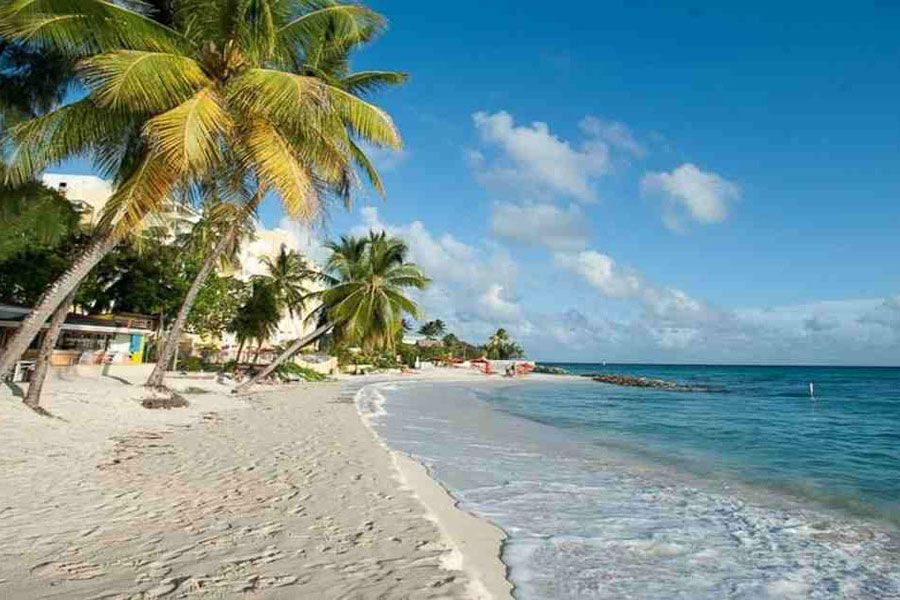
Published :
Updated :

Tourism in Bangladesh has experienced significant growth in recent years, with thousands of Bangladeshis travelling to various tourist spots across the country. For many, domestic tourism has become a favoured option for family vacations and weekend getaways. However, the number of tourist destinations in the country remains limited, which is a major barrier to sustainable growth of this industry. Among the most visited places, Bandarban hill district and St. Martin's Island stand out as key attractions, but both locations face restrictions, creating challenges that must be addressed to prevent a decline of the tourism sector.
The beautiful Bandarban hill district, with its lush greenery and vibrant indigenous cultures, is often subjected to restrictions for security reasons. Although these measures are important for maintaining law and order in sensitive regions, the frequent closure of such tourist spots hampers the growth of domestic tourism.
St. Martin's Island, Bangladesh's only coral island, is another prime attraction that is facing severe restrictions. Due to environmental concerns and the fragility of its coral reefs, the government has limited the number of tourists who can visit the island. St. Martin's Island is not just a scenic location, but also an environmental treasure that requires careful preservation. Pollution and over-tourism have been identified as significant threats to the island's biodiversity, which has led to the imposition of restrictions on its use as a tourist destination.
One immediate effect of these restrictions is the increased pressure on Cox's Bazar, which is already the largest tourist attraction in Bangladesh. Known for having the longest unbroken sea beach in the world, Cox's Bazar attracts millions of visitors every year. With restrictions on Bandarban and St. Martin's Island, more tourists will inevitably turn to Cox's Bazar as their primary destination, exacerbating existing issues of overcrowding and environmental degradation.
Overdependence on a few tourist spots, such as Cox's Bazar, not only threatens the sustainability of these locations but also limits the overall growth potential of the tourism industry. It becomes a zero-sum game, where increased tourism in one area results in the neglect or over-exploitation of another. This trend must be reversed if Bangladesh is to fully realise the potential of its tourism sector.
To mitigate these challenges, it is crucial for the government and private sector to invest in the development of new tourist destinations. There are numerous untapped regions across Bangladesh that could be developed into attractive alternatives for tourists. From the scenic tea gardens of Sylhet to the mangrove forests of the Sundarbans, Bangladesh boasts a rich diversity of landscapes that could serve as additional tourist hotspots.
Moreover, infrastructure development, particularly in lesser-known regions, is essential. This could include improved transportation networks, modern lodging facilities, and better promotion of new or lesser-known destinations. Tourism authorities need to actively work on diversifying the available options so that tourists are not confined to just a handful of popular spots. Such diversification would not only reduce the burden on current hotspots but also create employment opportunities in newer regions, providing economic benefits to local communities.
It is important to note that only a small fraction of Bangladeshis can afford to travel abroad for holidays. For the vast majority, domestic tourism is the only feasible option for vacationing with family and friends. The tourism sector also provides livelihoods for thousands of people, including hotel workers, tour operators, and local vendors. Any decline in domestic tourism due to limited options or over-reliance on a few destinations could lead to significant job losses and economic downturns in the tourism-dependent regions.
To safeguard the future of the tourism industry, it is imperative that domestic tourism be expanded and diversified. By developing new destinations and providing a wider range of options, authorities can ensure the continued growth of this vital sector while protecting the environment and maintaining the cultural and natural heritage of Bangladesh.
The tourism industry in Bangladesh stands at a critical juncture. While popular destinations like Bandarban and St. Martin's Island face necessary restrictions, it is essential for the government to develop alternative spots to prevent overcrowding and ensure the sustainability of the sector. By focusing on expanding domestic tourism, Bangladesh can protect its environmental treasures, stimulate local economies, and create more opportunities for both tourists and industry professionals alike.
mirmostafiz@yahoo.com


 For all latest news, follow The Financial Express Google News channel.
For all latest news, follow The Financial Express Google News channel.